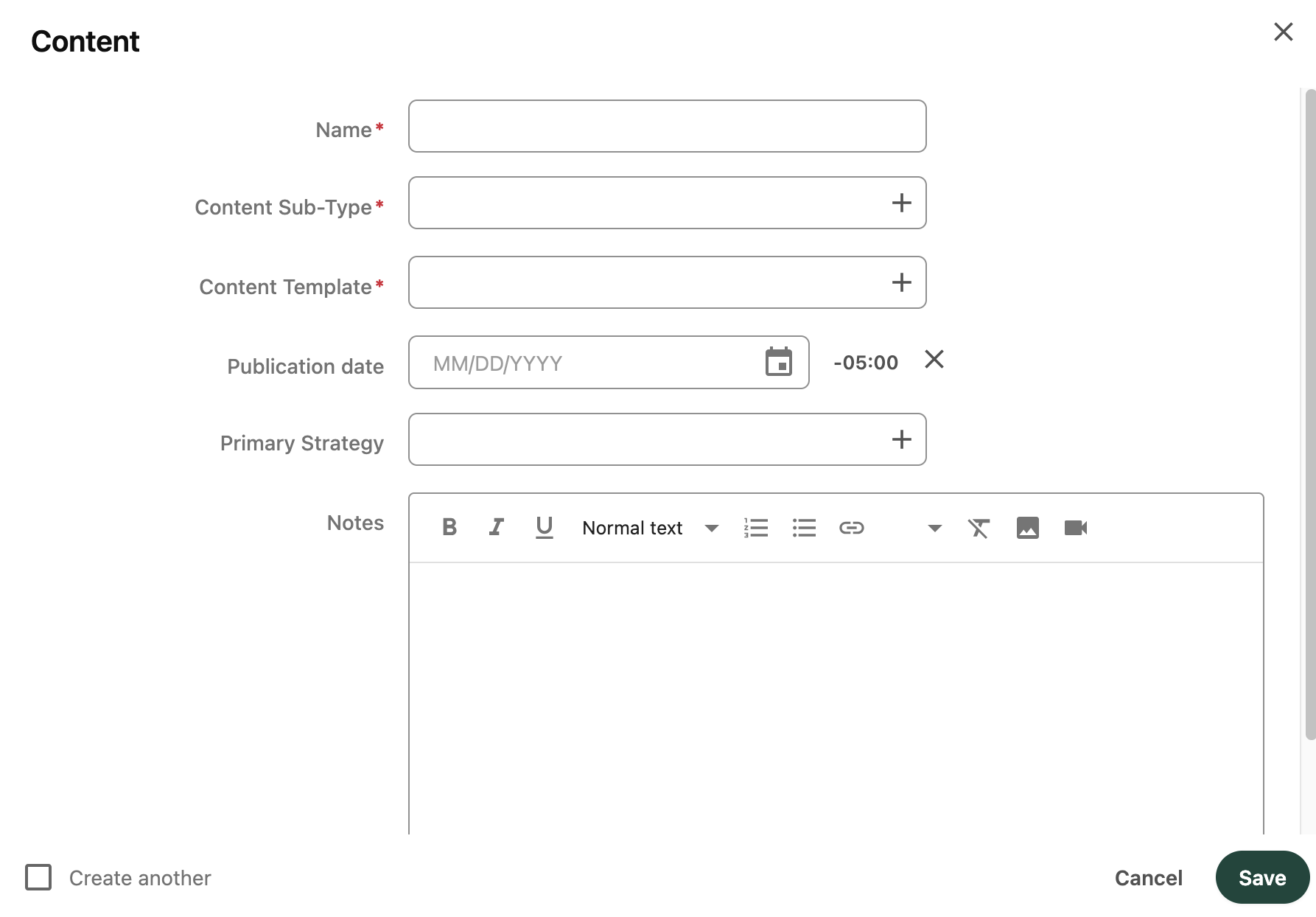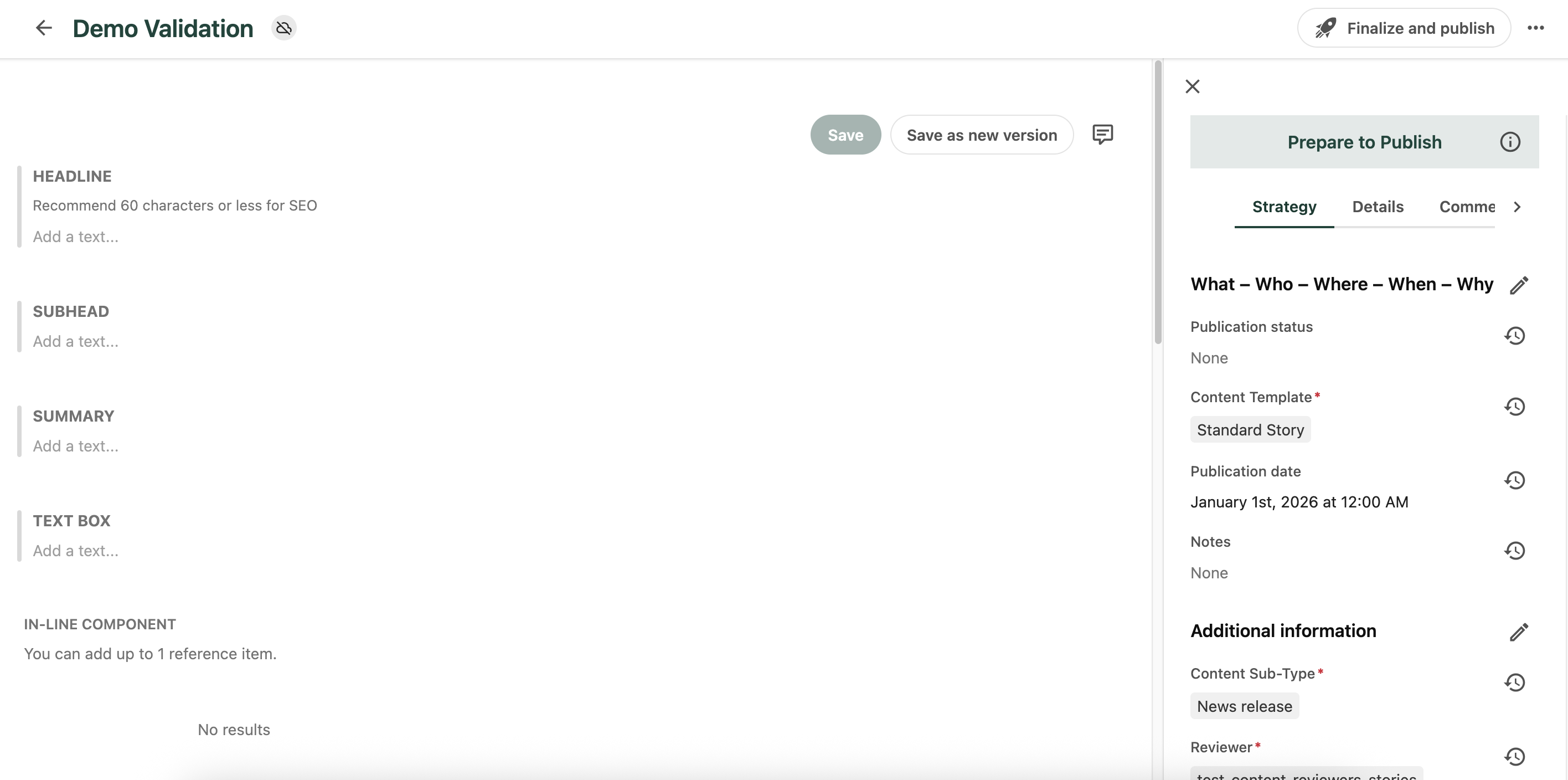There are a few foundational items to understand about how content is created and managed in Content Hub Ops:
- Content Type – The content type refers to the broad “bucket” of how the content item is classified. For example, Stories and Email are content types.
- Content Sub-Type – The content sub-type is a further categorization of the content within the context of the broader content type bucket. For example, “News release” is a sub-type of Stories. “Community Letter” is a sub-type of Email.
- Content Template – Content templates define the content item’s structure, available copy fields (for stories) and available metadata and taxonomy fields for use in the item. The selected Content Sub-Type determines which Content Template is used.
- Workflow – The workflow a content item must proceed through, from initial creation through to publishing, depends on the Content Sub-Type. See “Workflows Overview” for more detailed information.
When a content item is created, the user must first select a Content Sub-Type and then a Content Template. These then control the workflow, structure, fields and (for stories) layout of the final content in MSUToday.

Available Content Templates
Each Content Template is only valid for use with a specific set of Content Sub-Type(s). For example, a new “News Release” story sub-type can only use the “Standard Story” content template. A “Statements” story sub-type can only use the “Brief Story” content template. This helps to ensure a quality, cohesive digital experience for audience members.
The table below includes an overview of available content types and sub-types, corresponding content templates and their respective workflow groups. See "Workflows Overview" for additional information about workflows.
Content Template Fields and Structure
Content Templates define the structure, copy fields (for stories), metadata and taxonomy fields available for each content item. When a content item is created with a specified content sub-type and content template, the system automatically determines the structure of the content item as previously defined for the specific template.
Each content template field is defined in the data model as a specific data type. For example, Name and Title fields are defined as a single-line text string field. Meta Description is defined as a multi-line string text field. Text Box is a rich text field that allows for markup styling, inserting media and images, etc. Topics are defined as a list of available taxonomy values.
Each Content Template data field is presented on the Content Hub content item details page. Fields are grouped either the main Copy authoring panel (on the left), the Detail panel (a tab in the right sidebar) or the Strategy panel (a tab in the right sidebar). See Fig. 2.

For detailed information on each field available for each content template, please refer to the table below. Each field in the table is specified as applicable to either all content templates or to specific content template(s), noted in the Content Template column.
Note: When creating a new content entry, always select the Content Sub-Type first, then the Content Template. The Content Sub-Type field controls the available Content Templates. If selected in the reverse order, the available templates will be incorrect, and the content the item will need to be removed and recreated.